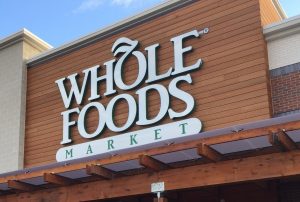 Whole Foods recently made headlines for cutting prices on a variety of popular grocery items. The company cut prices on items such as avocados, rotisserie chicken, and bananas on Aug. 28. However, the price cuts may not be producing the desired results.
Whole Foods recently made headlines for cutting prices on a variety of popular grocery items. The company cut prices on items such as avocados, rotisserie chicken, and bananas on Aug. 28. However, the price cuts may not be producing the desired results.
Whole Foods’ price cuts did get a lot of attention. Customer traffic on the first day of the reduced prices increased 31 percent over a year earlier. In all, traffic was 17 percent higher during the week after the price reductions, and was four percent higher about two weeks after the lower prices began. The data comes from the Thasos Group, which analyzes information from location data on millions of mobile phones.
The move didn’t significantly change its demographics, according to the new survey, released Tuesday. The people visiting Whole Foods during those first three weeks were no different than those it usually attracts. Its new owner, Amazon, has been trying to broaden Whole Foods’ customer base.
Only ten percent of those visiting Whole Foods in the first week said they usually shop at Trader Joe’s, while eight percent said they shop at Sprouts, an organic-food chain primarily located in the Southwest and West. Roughly three percent of the shoppers said they normally visit Target, while two percent were Kroger or Costco shoppers.
A number of retailers were hit hard by Whole Foods price cuts. Of the brand-new customers shopping at Whole Foods that first week, most were Wal-Mart and Kroger shoppers, followed by Costco, Target, and Sam’s Club. Walmart shoppers accounted for 24 percent of Whole Foods’ new customers in the first week, but accounted for less than 1 percent of its new customers by the third week.
Another survey reports that customers have seen little benefit from the lower prices. That survey finds overall prices at Whole Foods have dropped only about one percent since Amazon purchased the company in a $13.7 billion acquisition. The analysis by research firm Gordon Haskett measured prices between Aug. 28 and Sept. 26.
